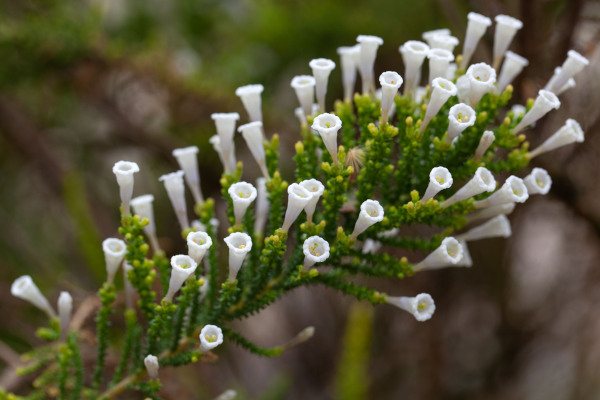How to grow Fabiana
Just 34 species of Fabiana have been identified in the world. Belonging to the Solanaceae family its ‘relatives’ include aubergine, tomato, capsicum, petunia! and of course ‘Deadly Nightshade’ Atropa belladonna.
Only Fabiana imbricata is cultivated as a common horticultural plant commonly called ‘false heath’ these heath like shrubs originate from South Africa and Chile.
A mound forming shrub with multiple numerous single flowers 1.5-2cm long, tubular in shape, flowering in early summer on spreading prostrate stems coved in heath like evergreen needle foliage.
Scientists have studied the genus for centuries for its medicinal purposes. The foliage of F. imbricata, specifically has been traditionally employed as a diuretic.

Zantedeschia is a genus of flowering plants from the family Araceae and is native to southern Africa. With a rich history dating back to the Ancient Romans, these deciduous or semi-evergreen perennials have been used as a symbol of celebration. Zantedeschia was Named after Professor Giovanni Zantedeschia, an Italian botanist.
There are two main forms of Zantedeschia: hardy and tender. Hardy forms of the plant can be grown outdoors, enjoy moist soil and full sun or partially shaded conditions - these are known as Arum lilies. Tender forms of Zantedeschia prefer being grown in containers or pots and should be brought inside over the winter - these are known as Calla lilies.
With tuberous flora in all colours from whites, yellows and oranges to deep reds and purples, Zantedeschias are not to be overlooked in any garden, as long as they have sufficient sunlight to grow in.
Ready to learn more about growing Zantedeschia? Read on for all there is to know...

Key Information
Soil pH
Position
Hardiness

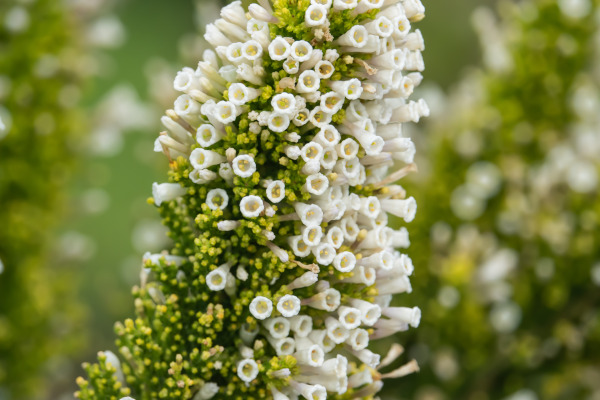
Where & when to plant Fabiana
Position - Full Sun
Soil - Moist, well-drained soil. Will grow in clay, loam and sand with acidic to neutral pH.
Flowers - early Summer.
Horticultural Divisions - Here we list out the most popularly cultivated species and hybrids available in the U.K.
| Species | Common name |
Hardy through most of the UK H4 (-10°C to -5°C) | Fabiana imbricata | False heath |
Fabiana can be planted all year around when purchased grown in pots so long as the ground is not frozen or waterlogged.
If container grown plants are planted out during the active summer growing season make sure that they are watered regularly until the plant has settled into its new location. Water at soil level rather than the foliage.
Preferring a sheltered site facing east, south or west with neutral to slightly acidic soil that is well drained and poor to moderately fertile.
- For planting in the garden, dig the soil area removing any large stones and weeds and breaking up any lumps. Mix in some organic matter, ideally leaf mould, though manure or garden compost are also fine. Rake level and firm with your heels. Rake level again.
- Water plants well and allow to drain before planting.
- A good tip is to dig a hole twice the size of the root-ball. Fill with water and allow to drain before placing in the plant which is especially good for summer plantings.
- Remove the plant from its pot placing the plant in the hole, ensuring the top of the root ball sits level with the surface of the soil. Too low and the plant may rot, too high and the roots can dry out
- Backfill with soil and firm in gently with your foot.
- Soak soil well with water.
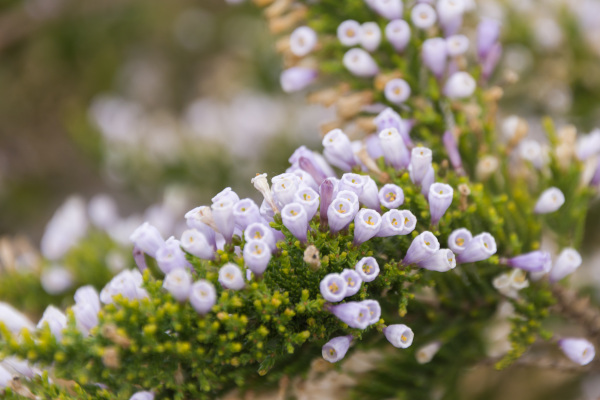
What to plant with Fabiana
Outdoors, plant alongside plants with different shaped or coloured foliage as a contrast whilst also making sure nearby plants have interest when fabiana are not in flower.
Try Agapanthus, Alstroemeria, Cordyline, Delosperma, Euphorbia, Ferns and Grasses, hardy Geranium, Mimulus and Phormium.
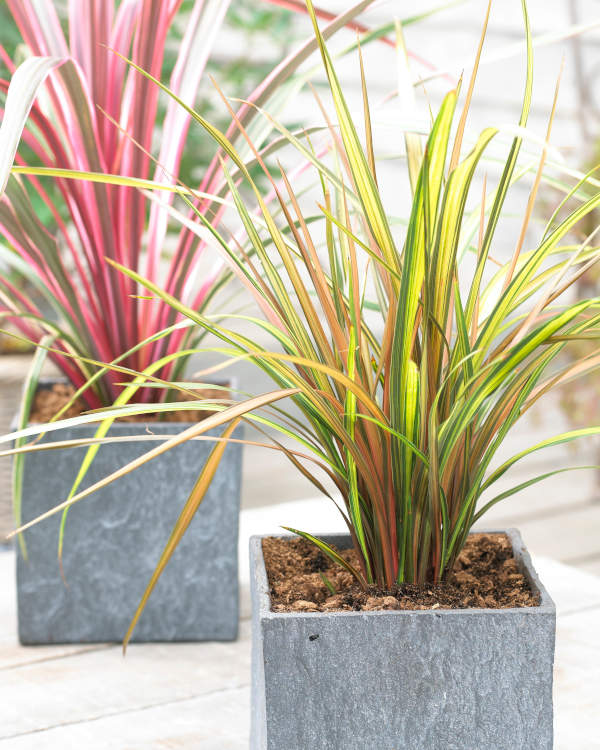
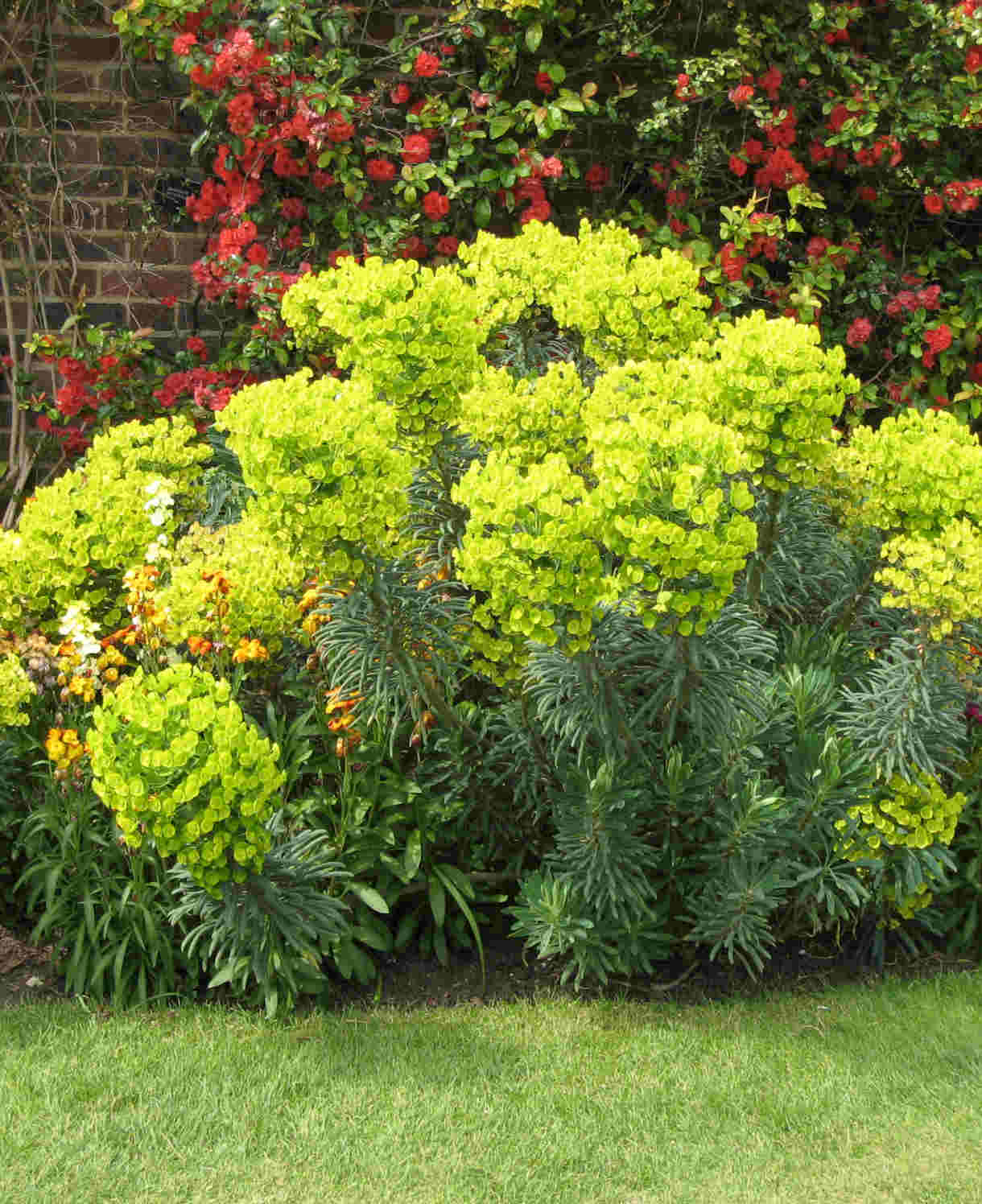
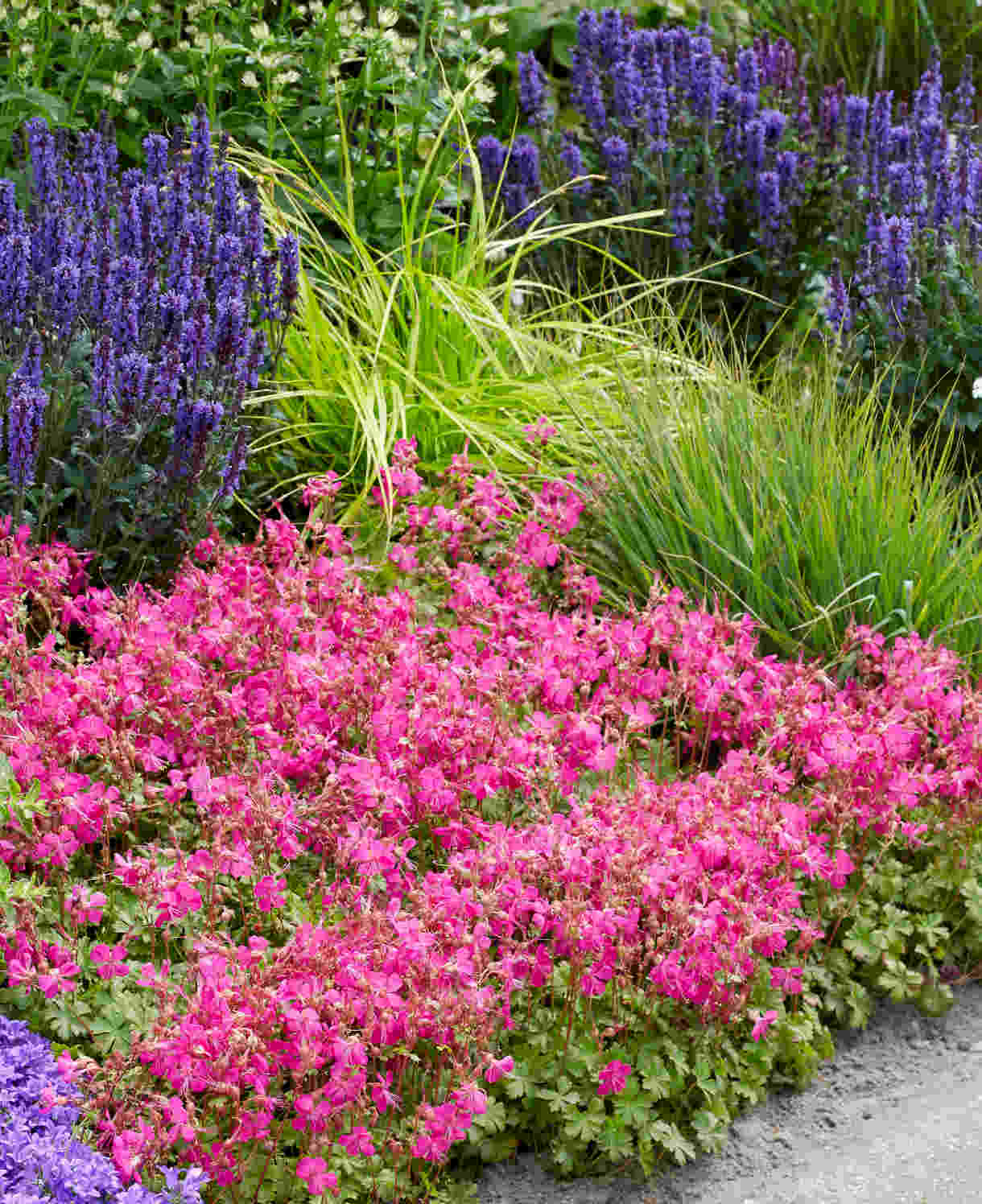
How to care for Fabiana
Pruning and Deadheading
There is no need to deadhead fabiana, the flowers will dry up and fall off. To tidy the plant simply brush your hand over the plant to encourage flowers and spent leaves to fall.
Fabiana fall into RHS pruning group 9.
Once established evergreen shrubs need no regular pruning, simply a tidy up to reshape after flowering in late spring. Cut stems to required length. Remove any damaged or unsightly branches as required.
Watering
On planting outside, they benefit from a good watering in on planting and then regular soakings until established. After this they shouldn’t need watering.
For container grown plants water regularly to keep moist at all times. Allow the top few centimetres to dry out between soakings is a good rule of thumb to avoid overwatering. To check this, wiggle your finger down into the soil until you hit a cool, damp bit. Ensure your container has drainage holes and water can escape from the planter by using pot feet.
Water the soil around the plant rather than its leaves.
Feeding
Fabiana thrive in poor soil conditions so minimal feeding is required.
An annual a mulch of well-rotted organic matter (i.e., a layer of leaf mould, manure, or garden compost applied to the soil around the plant) should provide enough nutrients for your fabiana. This has the added benefit of suppressing weeds and locking in moisture.
Cold Protection
Fabiana do not like cold winds in exposed sites. They also do not like their roots to get too wet. Choose a suitable location on planting or grow in a container which can be moved into shelter during the winter.
Pests and Diseases
Fabiana are generally pest and disease free.
How to propagate Fabiana
Propagate Fabiana by soft wood cuttings in early spring or semi hardwood cuttings late summer.
Softwood cuttings
Soft wood cuttings are taken from new season growth which are soft and flexible and root readily.
- Its best to take cuttings in the morning to avoid wilt. Choose stems that look healthy and free of pest and disease.
- Choose a non flowering shoot which is approximately 10-15cm long from its tip.
- Using a sharp knife trim below a node (leaf joint) Remove the lower sets of leaves leaving 2 to 4 leaves at the top.
- Pinch out the soft tip to just above a leaf joint and dip the base into rooting hormone powder or liquid.
- In a ready watered and drained pot level filled and lightly firmed with good quality seed and cutting compost, make a hole for the cutting with a dibber. Insert the base of the cutting until the first set of leaves are just above the surface.
- In a 9cm pot you can put 3 cuttings in a triangular formation making sure the leaves are well within the edges of the pot.
- Cover with a plastic sandwich- like-bag to form a mini propagator is a good idea for the first few weeks. Hold the bag in place on the pot with an elastic band or string. Ensure the bag is stiff enough to hold upright above the plants foliage. The plastic bag holds in moisture keeping the humidity high which reduces the rate of water loss from the cutting, increasing the success rate of propagation.
- Place the pot on a saucer away from direct sunlight, yet in a light area that is around 18-24o
- At least twice a week remove the bag to allow some ventilation to the cuttings for 15 minutes. Check the soil surface feels damp.
- Rooting takes 2 to 4 weeks. Gently pull on one of the cuttings if it shows resistance then it is likely roots are forming. The bag can now be removed for longer periods of time gradually acclimatising the cuttings to their surroundings. (Hardening Off)
- Remove any dead or decaying material regularly. Increase ventilation to remove excess moisture.
- Once hardened off for 2 -4 weeks the cuttings should be ready for potting on individually. Carefully remove the plants from the pot as one root ball. Checking for signs of good rooting - if not ready leave to develop for few more weeks. Carefully separate each cutting ensuring a good portion of root is kept intact potting on into individual 9cm pots. Water well and leave to develop in a light sheltered environment until established.
Semi ripe cuttings are selected from this seasons growth in late summer or early autumn. The base of the cutting should be hard, while the tip is still soft and flexible.
- Its best to take cuttings in the morning to avoid wilt. Choose stems that look healthy and free of pest and disease.
- Choose a non flowering shoot which is approximately 10-15cm long from its tip.
- Using a sharp knife trim below a node (leaf joint) Remove the lower sets of leaves leaving 2 to 4 leaves at the top.
- Pinch out the soft tip to just above a leaf joint and dip the base into rooting hormone powder or liquid.
- Cut large leaved shrubs cut the leaf in half to reduce water loss.
- In a ready watered and drained pot level filled and lightly firmed with good quality ericaceous compost, make a hole for the cutting with a dibber. Insert the base of the cutting until the first set of leaves are just above the surface.
- In a 9cm pot you can put 3 cuttings in a triangular formation making sure the leaves are well within the edges of the pot.
- Cover with a plastic sandwich- like-bag to form a mini propagator is a good idea for the first few weeks. Hold the bag in place on the pot with an elastic band or string. Ensure the bag is stiff enough to hold upright above the plants foliage. The plastic bag holds in moisture keeping the humidity high which reduces the rate of water loss from the cutting, increasing the success rate of propagation.
- Place the pot on a saucer away from direct sunlight, yet in a light area that is around 18-24o
- At least twice a week remove the bag to allow some ventilation to the cuttings for 15 minutes. Check the soil surface feels damp.
- Rooting takes 2 to 4 weeks. Gently pull on one of the cuttings if it shows resistance then it is likely roots are forming. The bag can now be removed for longer periods of time gradually acclimatising the cuttings to their surroundings. (Hardening Off)
- Remove any dead or decaying material regularly. Increase ventilation to remove excess moisture.
- Once hardened off for 2 -4 weeks the cuttings should be ready for potting on individually. Carefully remove the plants from the pot as one root ball. Checking for signs of good rooting - if not ready leave to develop for few more weeks. Carefully separate each cutting ensuring a good portion of root is kept intact potting on into individual 9cm pots. Water well and leave to develop in a light sheltered environment until established.
* Many plants carry Plant Breeders Rights and cannot be propagated for commercial purposes.
Common Fabiana questions
Is Fabiana poisonous?
No there are no known toxic effects.
How tall does Fabiana grow?
Dependent upon variety and growing conditions, Fabiana imbricata can grow up to 2.5m tall and wide in 10 years.
